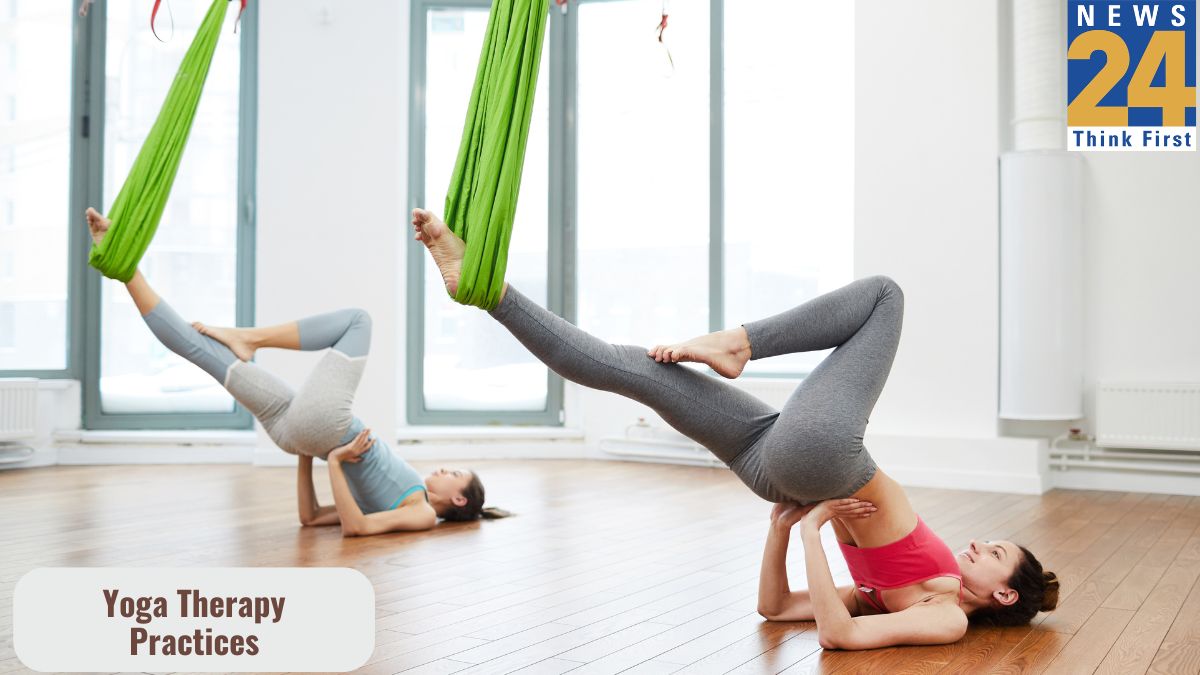What is Yoga Therapy?
Yoga therapy might sound heavy on people who are not accustomed to it. However, it is a therapy that makes use of different yoga postures, meditation, breathing exercises and guided imagery. These are used to revamp and build on physical and mental health. It comprises a holistic approach that focuses on the integration of body, spirit and mind. And its therapeutic modalities incorporate elements from both worlds of psychotherapy and physical therapy.
History of Yoga Therapy
Yoga therapy takes its roots in the very ancient practice of yoga that itself dates back to more than a thousand years in India. Although it was introduced to the Western world in the late 1800s, it did not find much prominence back then. Yoga therapy made its way into the western scenario formally in the 1980s and it was a result of a study conducted by Dr. Dean Ornish. His study basically reflected how yoga therapy could reverse certain diseases and conditions.
Also read – Yoga, Breathing Exercises and Meditation Techniques
Yoga Therapy that Treats Points at Issue
Yoga therapy today is fast gaining popularity. It probably is gaining recognition because of the emphasis that scientific evidence is throwing on it. Both mental and physical issues can be treated with it. However, it is also being used for self-care strategies for maintenance and prevention. Anxiety and depression also fall under the ambit of yoga therapy.
It is proving to be so immensely beneficial and it finds proof in the various fields that it can shine on. Studies reveal that it can treat PTSD, schizophrenia, autism, substance abuse, addiction, back pain, asthma, heart diseases, hypertension, chronic fatigue, side effects of chemotherapy and multiple sclerosis.
Expectations from Yoga Therapy
If you ever decide to undergo yoga therapy, then you are in for some pleasant surprises. You can expect to identify your health problem, assess your lifestyle and physical capabilities, chart out a course of treatment and discuss the reasons behind your seeking yoga therapy.
Components of Yoga Therapy
Now that you have decided on yoga therapy, you can understand what the experts will deliver to you. They will tell you the frequency of the therapy sessions and the components of the therapy. The components include:
- Pranayama or breathing exercises – You will be personally guided through a series of breathing exercises that span energising breaths to balancing breaths.
- Physical poses or asanas – Various yoga poses will be taught by the guide to address problematic areas in a person undergoing the therapy. Various ailments will have various postures to rectify them. It is not a one-size-fits-all program.
- Meditation – It is that program which works yoga poses in combination with mindfulness and relaxation.
- Guided imagery – The body and mind are calmed with the use of guided imagery with visualisation that brings in inner peace.
- Follow-up at home – All said and done, your yoga therapy will be set to achieve perfection the moment you incorporate whatever is taught to you at home. Practice whatever the expert teaches you and you will master it and gain what you went there for initially.
What Comes Off with Yoga Therapy
With yoga therapy you will be taught many movements and stretches that will definitely increase your flexibility, strength and balance. You will be taught:
- How to sit and stand appropriately by instilling awareness and best positions for safety
- Movements that help with motion and ease of joint movements
- Side bends that aid in opening up the mid-body and enhance better breathing
- Cat-cow pose to improve posture and flexibility of the spine
- Spinal twists for healthy digestion, toning & strengthening of the core muscles and relief in lower back pain













